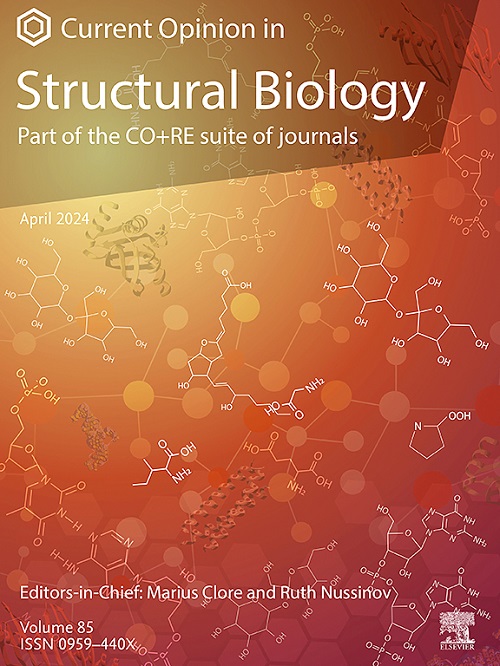活动的反转录转座子蛋白的结构和生化研究
IF 6.1
2区 生物学
Q1 BIOCHEMISTRY & MOLECULAR BIOLOGY
引用次数: 0
摘要
自主非长端重复(non-long-terminal repeat, non-LTR)逆转录转座子,包括长插入元件(long interspersed element, LINEs),是真核生物物种中丰富的可移动遗传元件,在健康和疾病中塑造基因组景观和宿主生理。非ltr逆转录转座子通过一种称为靶引反转录的机制创造新的基因组拷贝,其中逆转录转座子编码的蛋白质通过结合RNA(通常是其自身编码的mRNA)模板将目标DNA剪切为引反转录。直到最近,由于活性复合物的纯化和重组方面的挑战,缺乏关于非ltr逆转录转座子的结构信息。最近对昆虫、鸟类和海龟特异位点R2反转录转座子和人类LINE-1反转录转座子复合物的生化研究和低温电镜结构提供了重要的见解。本文将讨论这些研究及其对反转录转座子进化和真核生物基因组生物学的启示。本文章由计算机程序翻译,如有差异,请以英文原文为准。
Structural and biochemical studies of mobile retrotransposon proteins in action
Autonomous non-long-terminal repeat (non-LTR) retrotransposons, including long interspersed elements (LINEs), are mobile genetic elements abundant in eukaryotic species that shape the genomic landscape and host physiology in both health and disease. Non-LTR retrotransposons create new genomic copies through a mechanism termed target-primed reverse transcription, where the retrotransposon-encoded protein nicks target DNA to prime reverse transcription templated by bound RNA, typically its own encoding mRNA. Until recently, structural information on non-LTR retrotransposons was lacking due to challenges in purification and reconstitution of active complexes. Recent biochemical studies and cryo-electron microscopy structures of complexes from insect, bird, and turtle site-specific R2 retrotransposons and the human LINE-1 retrotransposon have provided important insights. Here we discuss these studies and their implications for retrotransposon evolution and eukaryotic genome biology.
求助全文
通过发布文献求助,成功后即可免费获取论文全文。
去求助
来源期刊

Current opinion in structural biology
生物-生化与分子生物学
CiteScore
12.20
自引率
2.90%
发文量
179
审稿时长
6-12 weeks
期刊介绍:
Current Opinion in Structural Biology (COSB) aims to stimulate scientifically grounded, interdisciplinary, multi-scale debate and exchange of ideas. It contains polished, concise and timely reviews and opinions, with particular emphasis on those articles published in the past two years. In addition to describing recent trends, the authors are encouraged to give their subjective opinion of the topics discussed.
In COSB, we help the reader by providing in a systematic manner:
1. The views of experts on current advances in their field in a clear and readable form.
2. Evaluations of the most interesting papers, annotated by experts, from the great wealth of original publications.
[...]
The subject of Structural Biology is divided into twelve themed sections, each of which is reviewed once a year. Each issue contains two sections, and the amount of space devoted to each section is related to its importance.
-Folding and Binding-
Nucleic acids and their protein complexes-
Macromolecular Machines-
Theory and Simulation-
Sequences and Topology-
New constructs and expression of proteins-
Membranes-
Engineering and Design-
Carbohydrate-protein interactions and glycosylation-
Biophysical and molecular biological methods-
Multi-protein assemblies in signalling-
Catalysis and Regulation
 求助内容:
求助内容: 应助结果提醒方式:
应助结果提醒方式:


